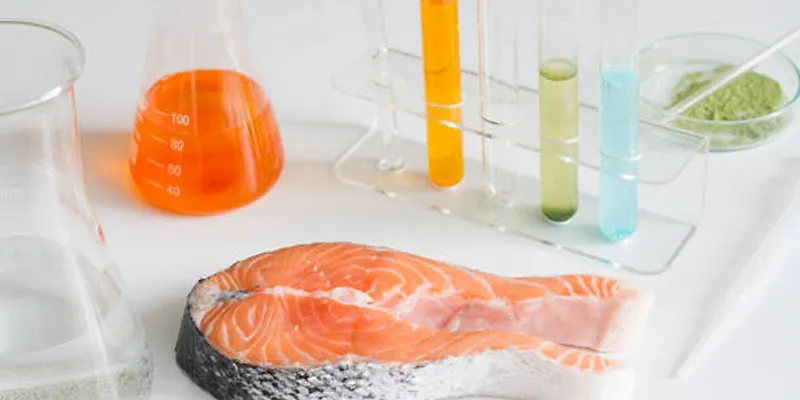Mercury in Seafood: How to Make Safer Eating Choices?
Making smart seafood choices is essential for enjoying the nutritional benefits of fish while minimizing exposure to mercury and other harmful contaminants. Fish is an excellent source of protein, omega-3 fatty acids, and important nutrients like vitamin D and selenium. However, certain species can carry elevated levels of mercury, which may pose health risks, particularly for pregnant women, young children, and those with compromised health. By being informed about which fish are lower in mercury and how to incorporate them into your diet, you can enjoy the advantages of seafood safely.
Mercury in Seafood
Mercury is a naturally occurring element found in soil, water, and air. It enters aquatic ecosystems through natural processes like volcanic eruptions and rock weathering, as well as human activities such as coal burning and improper waste disposal. Once in the water, mercury undergoes a chemical transformation into methylmercury—a highly toxic compound that is easily absorbed by living organisms.
Smaller fish and shellfish absorb methylmercury from their surroundings. As these organisms are consumed by larger predators, the toxin becomes more concentrated higher up the food chain through a process called biomagnification. Methylmercury exposure can impair brain and nervous system development, making it vital to understand these risks and make informed choices about seafood consumption.
The Risks of Mercury Exposure:
Excessive mercury exposure poses significant health risks, particularly to the nervous system. Young children and developing fetuses are especially vulnerable. Elevated mercury levels can result in:
- Neurological impairments , including memory loss and reduced cognitive function.
- Developmental delays in infants and children exposed during pregnancy.
- Cardiovascular issues in adults with prolonged exposure.
Seafood High in Mercury:
Certain types of seafood carry elevated mercury levels due to their long lifespans and position in the food chain. To minimize health risks, it’s best to avoid or limit these species:
- Shark
- Swordfish
- King Mackerel
- Tilefish
- Bigeye Tuna
Low-Mercury Seafood Choices:
Enjoy the health benefits of seafood while keeping mercury exposure to a minimum by choosing low-mercury options. Here are some excellent, nutrient- rich choices to include in your diet:
- Salmon
- Sardines
- Shrimp
- Tilapia
- Pollock
Safe Seafood Consumption Guidelines:

Enjoy seafood responsibly by following these essential tips:
1. Adhere to Weekly Serving Recommendations
- Adults : Consume 2–3 servings (8–12 ounces) of low-mercury fish per week.
- Pregnant or breastfeeding individuals : Prioritize low-mercury fish and avoid high-mercury species.
- Children : Adjust portion sizes based on age and weight, focusing on low-mercury options for safety.
2. Vary Your Seafood Choices
Incorporate a diverse range of seafood into your diet to minimize the risk of mercury overexposure from any one species.
3. Stay Informed with Local Advisories
If you catch your own fish, check local advisories for mercury levels in nearby water bodies to ensure the seafood you consume is safe.
The Importance of Omega-3 Fatty Acids:
Low-mercury seafood isn’t just safe to eat—it’s a powerhouse of omega-3 fatty acids, offering a range of health benefits, including:
- Brain health : Enhances cognitive function and supports mental clarity.
- Heart health : Reduces inflammation and helps lower triglyceride levels, promoting cardiovascular wellness.
- Eye health : Supports optimal retinal function and overall vision.
Mercury and Vulnerable Populations:
Certain groups are more sensitive to mercury exposure and should be cautious about their seafood choices. By understanding the risks and selecting wisely, these individuals can safeguard their health and well-being. Here’s what you need to know:
Pregnant and Breastfeeding Individuals:
During pregnancy, mercury can cross the placenta, and it can also accumulate in breast milk, potentially affecting a baby’s developing brain, nervous system, and overall health. High mercury exposure is linked to developmental delays, learning challenges, and reduced cognitive function in children.
To minimize these risks, opt for low-mercury seafood like salmon, shrimp, or cod. These choices not only limit mercury exposure but also provide essential nutrients such as omega-3 fatty acids, which are vital for fetal development and maternal health.
Young Children:
A child’s developing nervous system and brain are especially vulnerable to mercury, even in small amounts. Mercury exposure has been connected to behavioral challenges, memory issues, and learning difficulties in children.
To support healthy growth, serve young children low-mercury seafood in appropriate portions. Options like tilapia, catfish, or light canned tuna are excellent choices, but always check local seafood advisories to ensure safety.
Individuals with Preexisting Health Conditions:
People with neurological or cardiovascular conditions may be more sensitive to mercury exposure, which can worsen symptoms associated with conditions like multiple sclerosis, Parkinson’s disease, or heart disease. For these individuals, choosing low-mercury seafood is especially important.
Tips for Choosing Seafood:

1. Look for Labels and Certifications
When buying packaged seafood, take a moment to read the labels carefully. Prioritize options labeled “sustainably sourced,” “wild-caught,” or “low mercury,” as these signal efforts to reduce environmental impact and health risks.
Certifications from trusted organizations like the Marine Stewardship Council (MSC) or Aquaculture Stewardship Council (ASC) are reliable indicators of responsibly sourced seafood that meets safety and sustainability standards.
2. Choose Fresh, Local Options
Opting for fresh, locally sourced seafood enhances both the taste of your meal and its sustainability. Local seafood often contains lower mercury levels compared to imported varieties, which may come from areas with less rigorous regulations. Visit local fish markets or speak with knowledgeable fishmongers to learn more about the origin of your seafood and how it was caught.
3. Keep Portions in Check
Experts recommend enjoying two to three servings of low-mercury seafood per week for a balanced, healthy diet. Managing portion sizes also helps diversify your meals, allowing you to pair seafood with vegetables and whole grains for a wholesome, satisfying plate.
Conclusion
Incorporating seafood into your diet offers a wealth of health benefits, but it’s important to be mindful of mercury exposure. By choosing species with lower mercury levels and following consumption guidelines, you can safely enjoy the advantages of seafood. Prioritizing sustainably caught, locally sourced options not only minimizes health risks but also supports environmentally responsible fishing practices.











